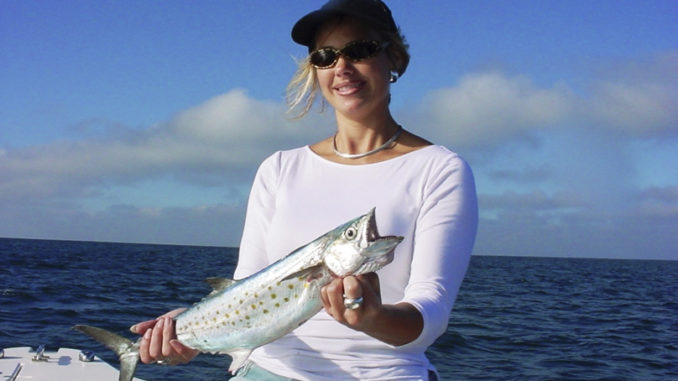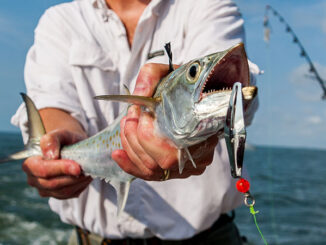
Break out the spoons for a hot Spanish bite
Trolling for Spanish mackerel off North Carolina’s southern beaches is one of the highlights of May and June fishing.
These smaller members of the mackerel family are favorites of many fishermen. They arrive hungry, usually in fairly large schools, close to inlets or along the beaches, and they taste good. That’s a combination many fishermen look forward to each year, and the fishing hits a peak during late May and into June.
The first Spanish mackerel may arrive in late April in warm years, and their numbers grow during May. By June, their numbers are at their highest.
Prime locations for Spanish are on the tide lines just outside Masonboro, Carolina Beach, Cape Fear, Lockwood Folly, Shallotte and Little River inlets. They may also be around any of the many nearshore artificial reefs or rocks. Some adventuresome fishermen troll the edges of Frying Pan Shoals, where wind and current push baitfish against the shoals and Spanish mackerel follow to feast.
The standard method for catching Spanish is trolling small, flashy lures. The trolling speed is brisk, but Spanish are quick and can easily catch anything that grabs their interest. Clark Spoons are the long-time favorite lures for Spanish mackerel. The smaller Nos. 0 and 00 sizes usually catch more fish during spring and summer; larger lures also produce in the fall when bait and fish are larger.
Other similar spoons include the Huntington Drone in Nos. 0 and 00 and the Tony Accetta Pet 13. Mackerel tree, mackerel duster and straw rigs also catch well. Mackerel tree rigs use several short pieces of colored surgical tubing, with a Clark Spoon at the end, to make a multiple-hook rig. A straw rig is similar, but uses 1- to 2-inch pieces of drinking straws instead of tubing. A mackerel duster rig uses a skirt (duster) a foot or so ahead of the spoon.
Spoons are fished on long mono or fluorocarbon leaders behind trolling sinkers and/or small planers, and occasionally, a surface line is added. Using different trolling sinker weights and planer sizes allows fishing at different depths to locate where Spanish are feeding. If fish show a preference for a specific depth, the spread is easily adjusted.
Fishermen who prefer casting usually have good luck with bright or flashy lures like Got-Chas, Jigfish, Hopkins and Stingsilvers. One not-so-secret tip is Got-Chas with gold hooks catch much better. Whatever you use, the retrieve speed is quick. If they want it, they’ll catch it.





Be the first to comment